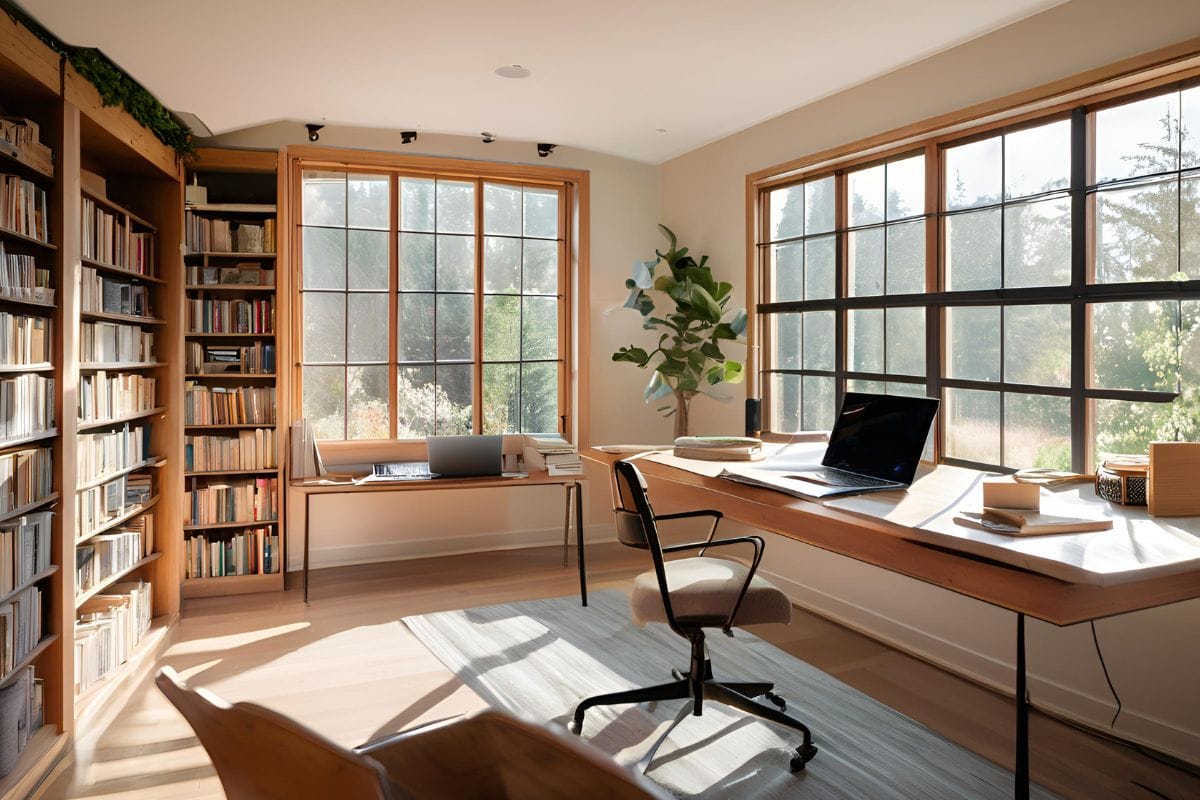Did you know a dedicated home study space can significantly boost learning efficiency and productivity? It’s true! Whether you’re moving into a new home and setting up a space for a grade-schooler, high schooler, or college student, creating a productive study environment is key. Let’s explore some tips to help you get started.
Create an Ideal Learning Environment
A cluttered, noisy, or uncomfortable space can greatly hinder focus and productivity. With more students and parents working and attending school from home, it’s crucial to design a study area that fosters concentration and efficiency.
Studies show that productivity increases when students work in organized, distraction-free spaces, allowing them to retain more information and complete tasks more effectively. Regular breaks are also essential for maintaining focus and reducing stress, which further supports overall productivity.
How to Create a Customized Study Space
- Choose the Right Location
Finding the perfect spot is crucial for productivity. A spare room, finished basement, or attic can serve as an ideal study area where distractions are minimized. If space is limited, you can use room dividers to create a quiet nook in the living room or other calm areas.
Avoid high-traffic zones like hallways or laundry rooms, as these areas can reduce focus and lead to lower productivity. For children who thrive with some background noise, consider setting up a space near the kitchen or a shared area while keeping distractions to a minimum.
- Tailor It to the User
Consider who will be using the space and their specific needs. If the study area is shared between siblings, use multiple desks or workstations to allow each child to have a personalized, functional space.
A well-organized desk is key to productivity. It should be large enough to hold essentials like textbooks, a laptop, and supplies but not too big to encourage clutter. Customizing each space to fit the user’s learning style can improve their focus and productivity.
- Implement Smart Storage Solutions
Good organization directly impacts productivity. Clutter can reduce focus and waste valuable time searching for supplies. Adding custom storage solutions such as bookshelves, bins, and cubbies helps keep things organized and easily accessible. Implementing systems to manage materials effectively allows kids to focus on their tasks, boosting their productivity. - Ensure Proper Lighting
Lighting plays a critical role in boosting productivity and maintaining focus. Place desks near windows for natural light, which can improve mood and energy levels. For evening study sessions, add LED task lighting to reduce eye strain. The colors of your walls also impact productivity—shades like light green, yellow, or blue are known to stimulate concentration and efficiency.

Keep Distractions at Bay
Distractions are productivity killers. Encourage your kids to hand over their phones during study sessions, and consider using instrumental music apps that block out background noise. Keeping TVs out of the study space can further reduce distractions, allowing your child to focus on their tasks without interruptions.
Make it Comfortable but Functional
While comfort is essential for focus, the space should remain functional. Too much comfort, like studying in bed, can reduce productivity. Chairs should be comfortable enough to allow for long study sessions without discomfort, but the study area should be designed to promote work, not relaxation. By separating study spaces from sleeping areas, you can create an environment more conducive to productivity.
Encourage Cleanliness and Organization
A clutter-free space is key to maintaining a productive mindset. Encourage your kids to keep their study space tidy by offering small incentives. A clean, organized environment not only looks better but also helps reduce distractions, allowing students to focus and get more done. Letting them personalize their space can help keep them motivated and engaged in their work.
Contact Moving Proz
If you’re moving and need help setting up your new home study space, Moving Proz is here to assist. Contact us today for a free quote and let us help you create a space designed for productivity and success!

